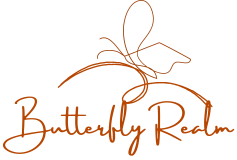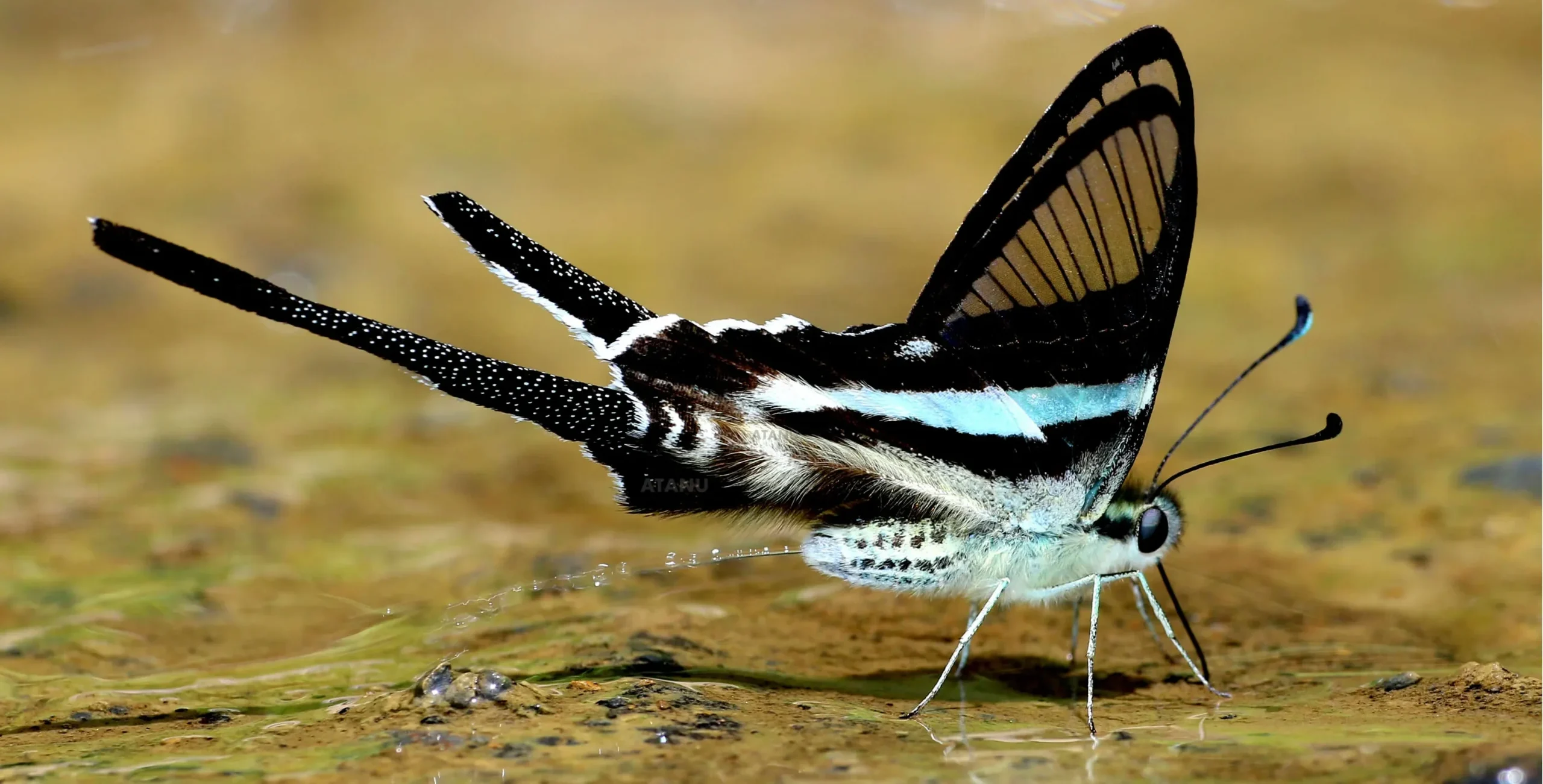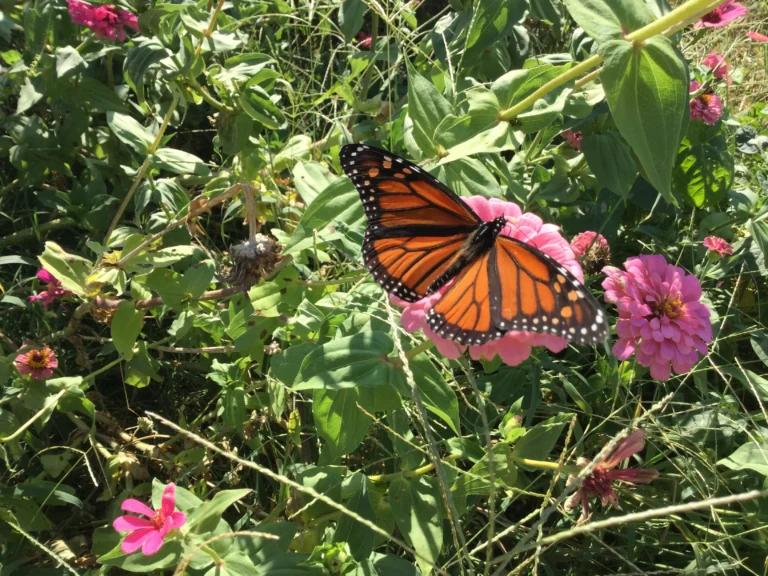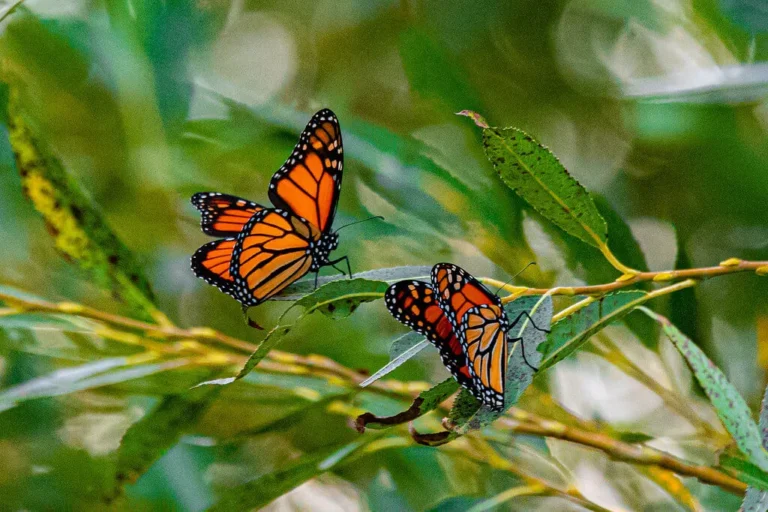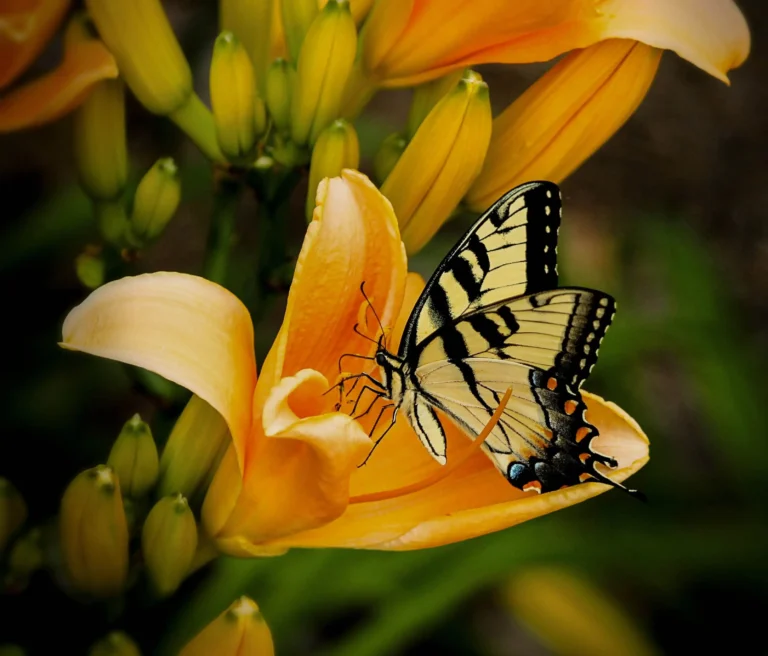Meet The Green Dragontail Butterfly (Lamproptera meges)
Introduction
Have you ever spotted a butterfly that made you stop and look? The green dragontail butterfly, known by its scientific name Lamproptera meges, does just that. It’s not the biggest or the flashiest, but it holds its own special charm. Its lively movements and bright colors draw us in.
Many people love watching it, and there’s a lot to learn about this wonderful creature. In this article, we will dive into its world, from how it looks to where it lives. Get ready to discover the green dragontail butterfly up close.
Table of Contents
Taxonomy and Classification

- Kingdom: Animalia: Like other butterflies, this species belongs to the Animalia kingdom.
- Phylum: Arthropoda: This phylum classification means it has jointed legs and a hard exoskeleton, features seen in many insects.
- Class Insecta: It is an insect, with six legs, two antennas, and three main body parts, belonging to the Insecta class.
- Order: Lepidoptera: This species, along with other butterflies, falls under the Lepidoptera order, which is known for uniquely scaled wings.
- Family: Papilionidae: This butterfly is part of the Papilionidae family, also known as swallowtails, celebrated for their distinctive tailed wings.
- Genus: Lamproptera: Within this genus, the butterfly finds its closer relatives.
- Species: Lamproptera meges: This is its specific name, distinguishing it from all other butterflies.
Physical Characteristics
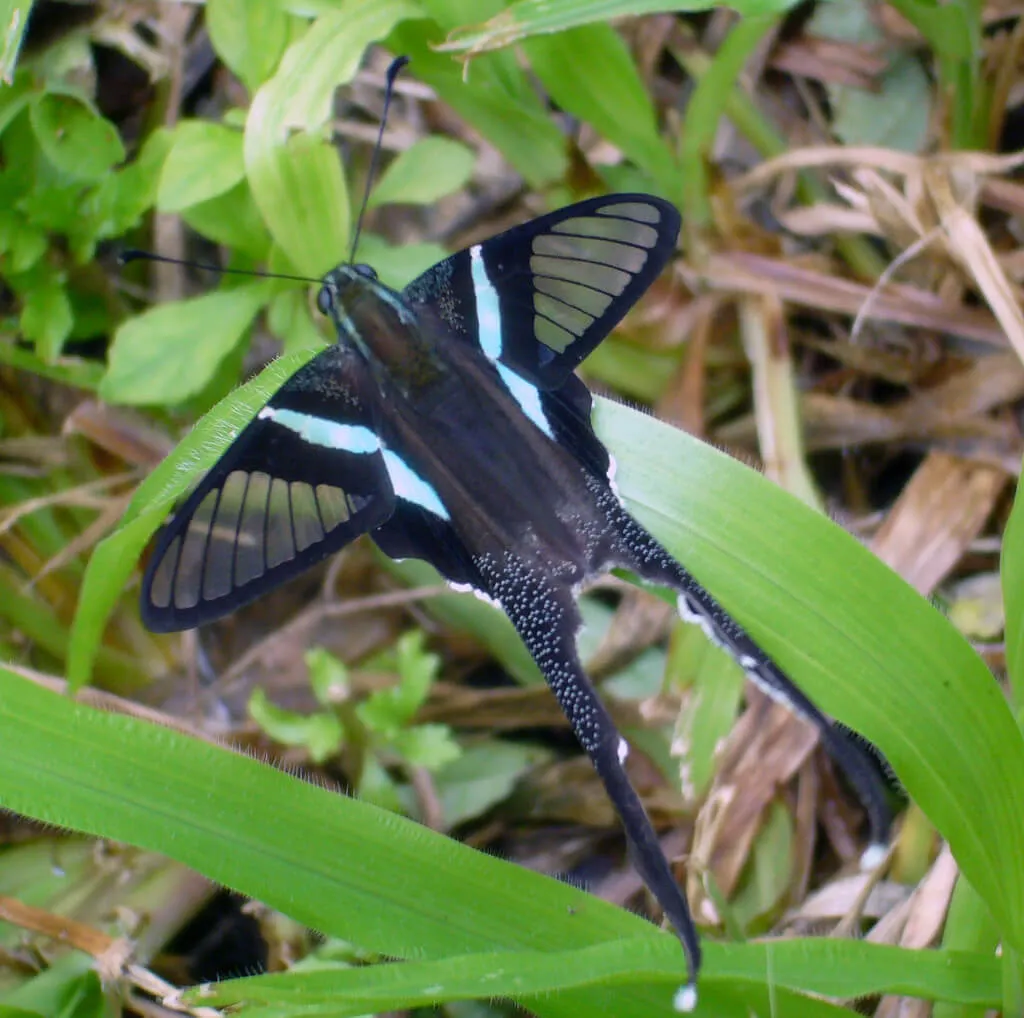
Size and Agility
The green dragontail has features that make it stand out, even in the diverse world of butterflies. Starting with its size, it’s not the biggest butterfly you might come across.
Typically, it has a wingspan ranging from 40 to 50 mm. This smaller size gives it quick, agile movements which are a treat to watch.
Color and Camouflage
Its wings are a beautiful mix of pale green and white. This isn’t just for looks. The colors help the butterfly blend into its surroundings, protecting it from predators.
Tail-like Appendages
The long tails on its wings play a critical role in its defense strategy. Predators, often distracted by these moving tails, miss catching the main body, allowing the butterfly a chance to flee.
Translucent Beauty
One of its most striking features is the almost transparent portions of its wings. They shimmer in the sunlight, adding a magical touch to it’s presence.
Life Cycle
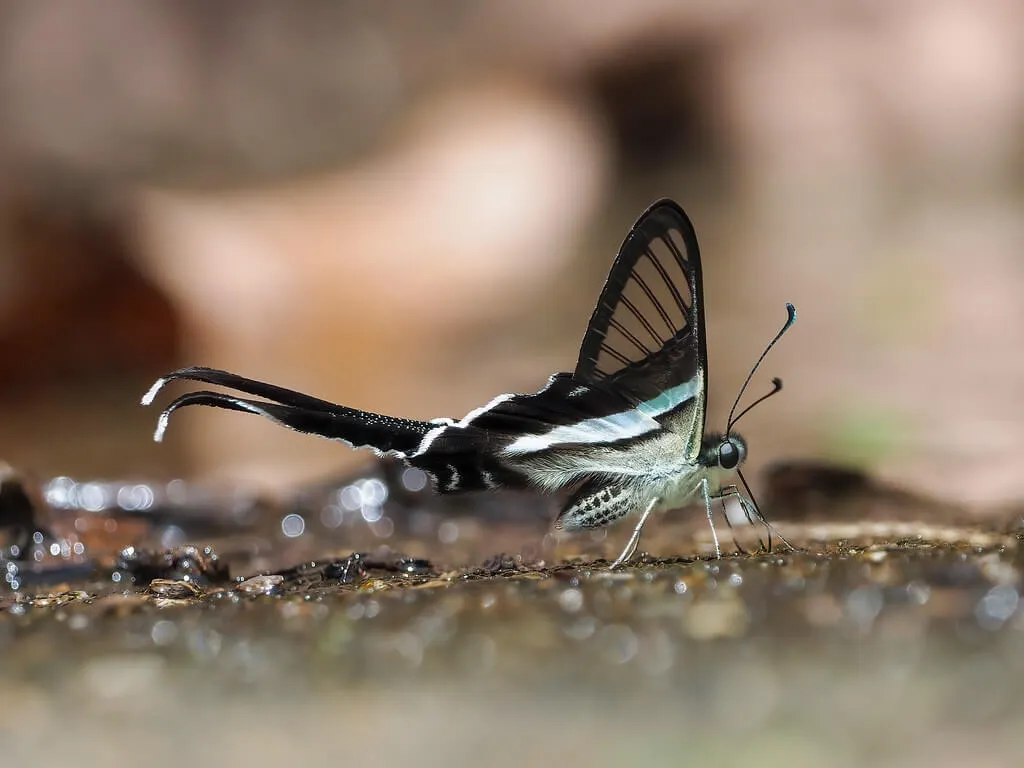
The green dragontail’s life cycle stands out with unique behaviors and choices of habitat.
Egg Stage
Females lay eggs on specific plants, primarily from the Zanthoxylum genus. These plants become the primary diet for the caterpillars upon hatching.
Caterpillar Stage
Once hatched, the caterpillars feed on Zanthoxylum leaves, blending in due to their evolved appearance, adding a layer of protection.
Pupa Stage
During the pupa phase, its chrysalis hangs at an intriguing angle, often merging with the environment for protection.
Adult Stage
Emerging as an adult, the green dragontail displays its iconic tail-like appendages and semi-transparent wings.
The bird’s quick and zigzag flight helps it escape from predators because of its light body and wings.
Habitat and Distribution
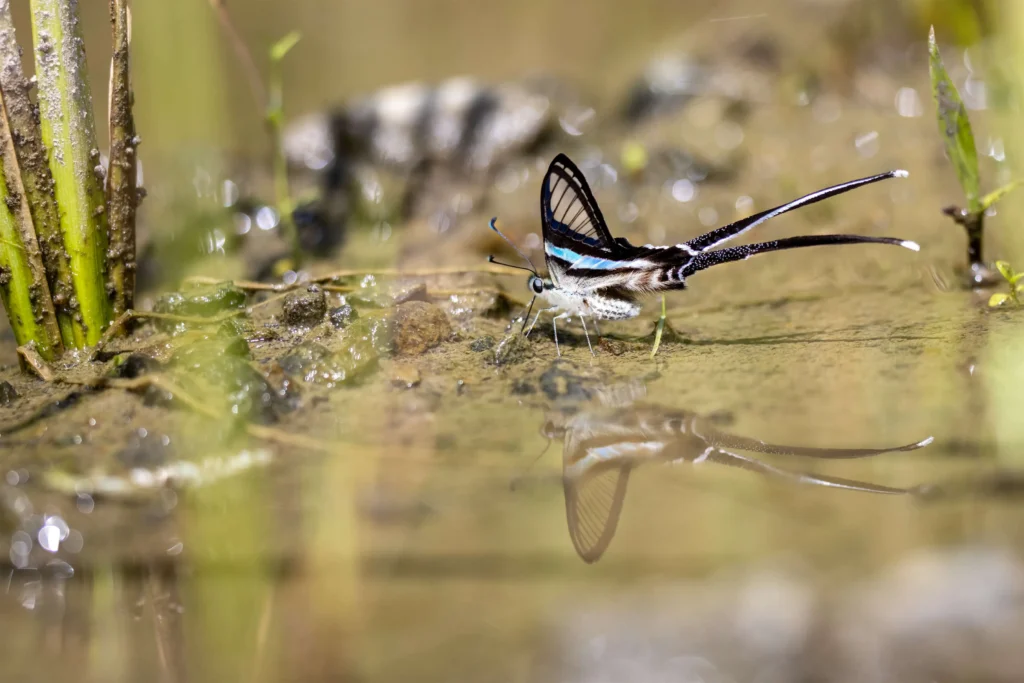
This butterfly stands out due to its habitat preferences and adaptability.
Natural Habitats
The green dragontail prefers forested areas, particularly those with a mix of clearings and dense trees. These forests offer the butterfly protection from predators, a diverse array of food sources, and optimal conditions for laying eggs.
They typically find areas with an abundance of their favored host plants, such as the Zanthoxylum species.
Geographic Distribution
The green dragontail butterfly inhabits South and Southeast Asia, including India, Myanmar, Thailand, Malaysia, and Indonesia. The presence of suitable habitats and host plants influences its distribution.
Migration and Patterns
Unlike Monarch butterflies, this species doesn’t undertake long migratory journeys. Instead, it tends to stay within its localized region, moving based on food availability and environmental conditions.
The Green Dragontail Butterfly Diet & Feeding Habits

Nutrition is essential for all stages of it’s life.
Caterpillar Diet
Green dragontail caterpillars eat leaves from Zanthoxylum plants when they are young.
These leaves provide the essential nutrients the caterpillars need to grow and transition to the next stage of their life cycle.
Adult Diet
Once they metamorphose into butterflies, their dietary preferences shift. Adult green dragontails primarily feed on nectar from a variety of flowering plants.
This sugary liquid provides them with the energy they need for their active lifestyles, from flying to mating.
Occasionally, they might also sip on tree sap or moist mud, which can offer them additional minerals and hydration.
Role in the Ecosystem
By feeding on nectar, the green dragontail plays a role in pollination, helping plants reproduce. Their caterpillars, by feeding on specific plants, can also influence plant growth and distribution, showcasing a balance in nature.
Behavior and Interaction
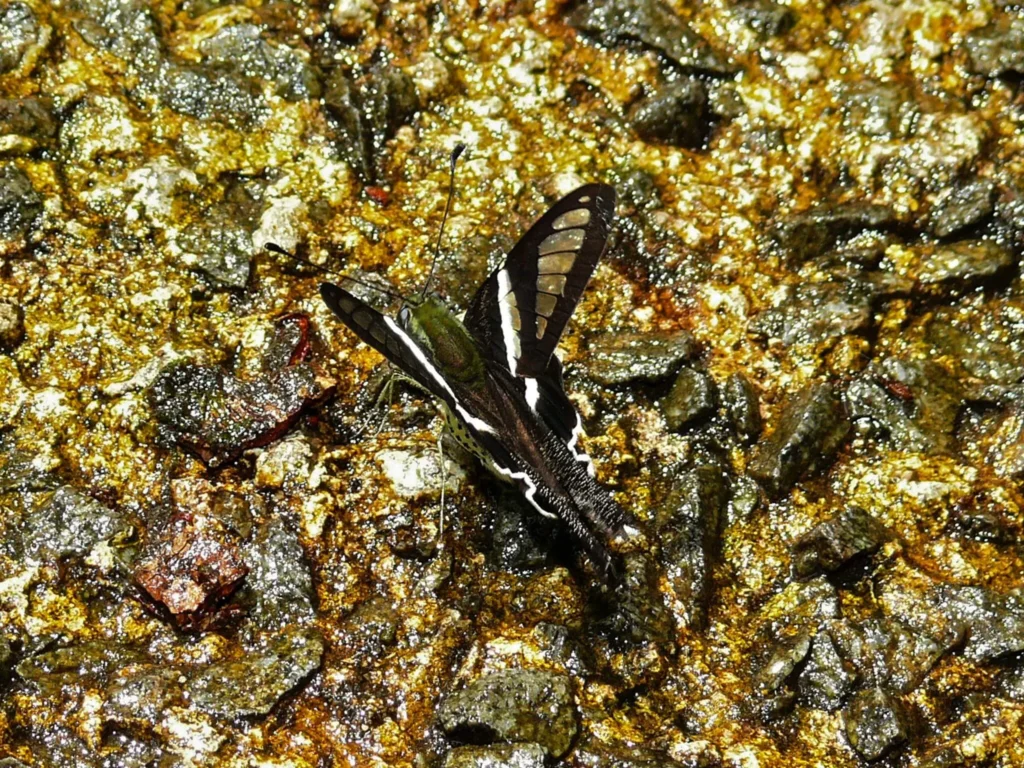
Butterflies aren’t just about colorful wings and graceful flights. The behavior and interactions of this butterfly reveal more layers of its fascinating existence.
Mating Rituals
Engaging in distinct mating dances, males often circle females, displaying their colorful wings. Once paired, they seek a secure location, prioritizing their progeny’s safety.
Defensive Mechanisms
The green dragontail’s unique appearance isn’t just for show. Those tail-like appendages on its wings act as a decoy. Predators often mistake them for antennas, attacking the wrong end and giving the butterfly a better chance to escape.
Moreover, their swift and darting flight patterns make them harder targets for predators like birds.
Interaction with Other Species
This butterfly aids in pollinating flowers and, in its caterpillar form, impacts plant growth and distribution.
Cultural and Symbolic Significance
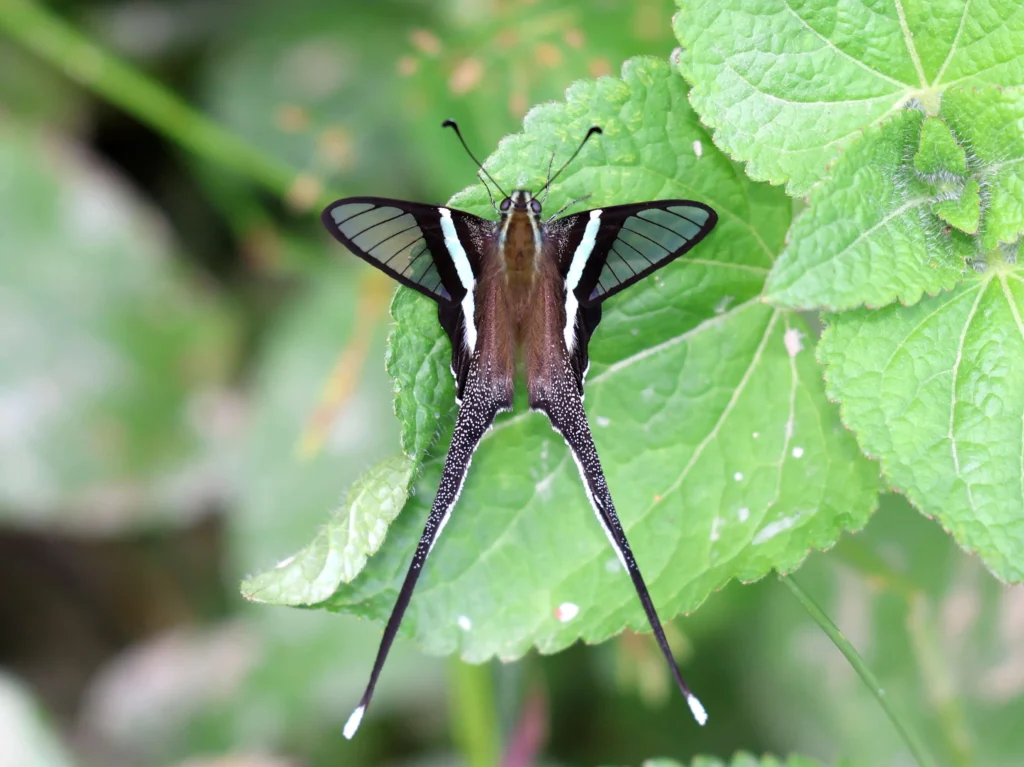
The green dragontail is more than just a butterfly. It has inspired people in many ways, from telling stories to creating art.
Stories and Beliefs
Many people believe butterflies, including the green dragontail, are signs of change and new beginnings. Its distinctive look often links it with tales of nature spirits or mystical entities.
Value to People
Many folks love watching butterflies, and this green-winged beauty is a favorite for many. Places where these butterflies live can become popular spots for visitors, helping local businesses. Different arts and crafts feature the picture of this butterfly due to its beauty.
Conclusion
In the vast world of nature, the green dragontail stands out with its unique charm. This butterfly captivates us in many ways, from its graceful flight to its importance in our stories.
As we’ve explored its life, habitat, and significance, it’s clear that there’s more to this creature than meets the eye.
The journey of Lamproptera meges, from egg to fluttering adult, serves as a reminder of the wonders of nature. By understanding and valuing its place in our world, we can ensure that future generations also get to witness its beauty.
Learning about and protecting this butterfly helps us become more informed and nature-loving.
